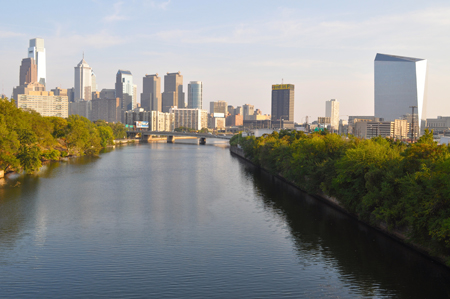Keeping the Bargain - Investing in Infrastructure

We've mentioned in previous blogs that we've got better priced water than our suburban friends. Our infrastructure has to stay ahead of the curve to keep it that way. Photo- Randy Calderone.
Now that we’re into the New Year, most of our customers have probably gotten their first water bills of the year. As we explained at the beginning of the month, rate changes that were approved as a part of our public hearing process this summer and fall went into effect starting January 1st. While rate increases are always difficult, we don’t take them lightly and turn to them only to cover the costs of “big-ticket” items that occur in the process of providing the same clean, safe, reliable drinking water our ratepayers have come to depend on.
For the next few days, we’re going to outline some of these big-ticket items so we can be as transparent as possible about what our recent rate changes are going toward.
To start off... for all of those who have seen the newly released theatrical version of Les Misérables and were curious about the sewers through which Jean Valjean carries a wounded Marius Pontmercy, let us explain a little about Philadelphia’s sewer system which bears some striking resemblance to those of mid-1800s Paris.
Our combined sewer system sends wastewater from the home into the same pipes as storm water from the rain. While the generations before us were doing the best they could with the information and resources they had at the time, it turns out that connecting the pipes that come from our drains and toilets to the same tunnels that carry the storm water can bring some problems. As little as a tenth of an inch of rain is enough to overwhelm our sewage treatment plants and cause overflows of storm water and raw sewage to spill into our waterways. So PWD is solving this with our state-of-the-art and yet fiscally conservative $2 billion Green City Clean Waters Plan. This is as little as a quarter of what other cities have planned on spending to fix the same kind of problem, but it will still add to our costs over the next several years.
Our goal is to use green infrastructure to keep storm water from ever reaching the sewer system, directing it instead where it naturally wants to go: back into the ground. “Green” infrastructure refers to street trees or planters, as opposed to “gray” infrastructure like pipes. By the time all of the Green City, Clean Waters infrastructure improvements are put in place, Philadelphia will have the nation’s greenest, most innovative and naturalistic solution for storm water management. It’s an investment that will pay off for our children, grandchildren and beyond.
Check out our Green City, Clean Waters Year in Review
to see how far we’ve come already and learn more about where we’re going.
Have you noticed Green City, Clean Waters projects in your neighborhood?
Share with us at our Facebook page!